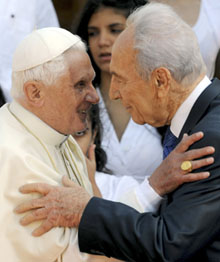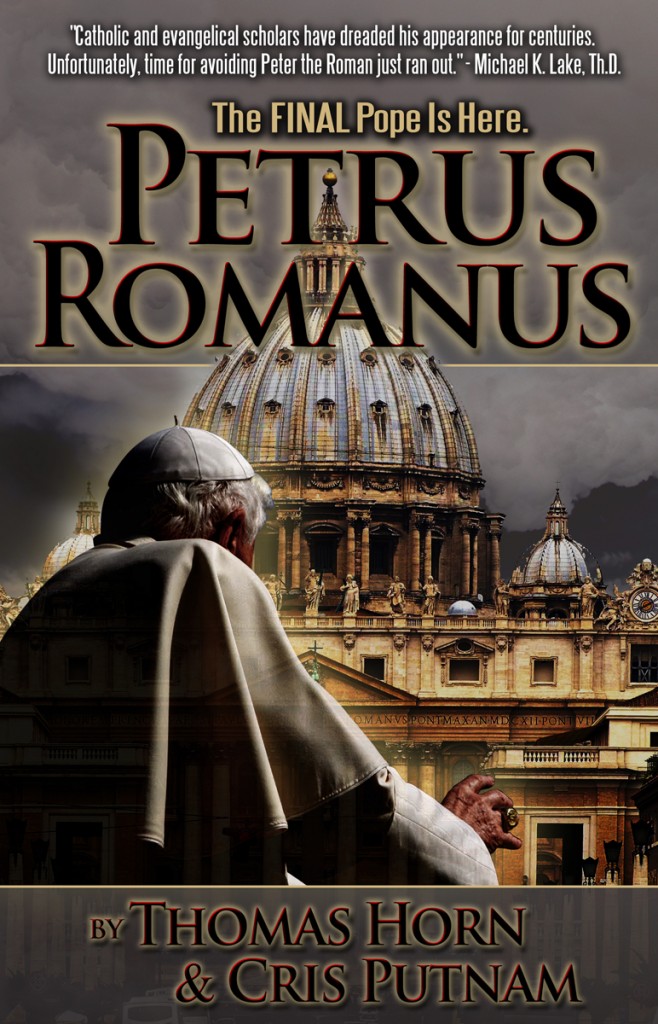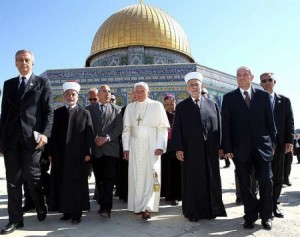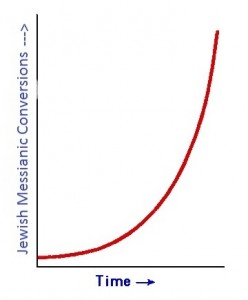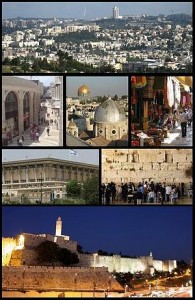 The Vatican’s establishment of full diplomatic relations with Israel in 1993 has been credited as an overdue political consequence to the theological changes reflected in Nostra Aetate. However, in truth, there is much more going on than meets the eye. As early as April 15th, 1992, Cardinal Joseph Ratzinger visited Israel and met exclusively with Jerusalem Mayor Teddy Kollek. The Jerusalem mayor was quoted previously as saying, “The Israeli government should meet the Vatican’s demand to apply special status for Jerusalem.”[i] An Israeli journalist, Barry Chamish, has been working fearlessly for over two decades to expose a conspiracy which includes the current President of Israel, Shimon Peres, and his aid, Yossi Beilin. In his 2000 book, Save Israel, Chamish wrote:
The Vatican’s establishment of full diplomatic relations with Israel in 1993 has been credited as an overdue political consequence to the theological changes reflected in Nostra Aetate. However, in truth, there is much more going on than meets the eye. As early as April 15th, 1992, Cardinal Joseph Ratzinger visited Israel and met exclusively with Jerusalem Mayor Teddy Kollek. The Jerusalem mayor was quoted previously as saying, “The Israeli government should meet the Vatican’s demand to apply special status for Jerusalem.”[i] An Israeli journalist, Barry Chamish, has been working fearlessly for over two decades to expose a conspiracy which includes the current President of Israel, Shimon Peres, and his aid, Yossi Beilin. In his 2000 book, Save Israel, Chamish wrote:
In March 1994, the newspaper Shishi revealed a most remarkable secret of the Middle East “peace” process. A friend of Shimon Peres, the French intellectual Marek Halter, claimed in an interview that in May 1993, he delivered a letter from Peres to the pope. Within, Peres promised to internationalize Jerusalem, granting the UN political control of the Old City of Jerusalem, and the Vatican hegemony of the holy sites within. The UN would give the PLO a capital within its new territory and East Jerusalem would become a kind of free trade zone of world diplomacy.
Halter’s claim was backed by the Italian newspaper La Stampa, which added that Arafat was apprised of the agreement and it was included in the secret clauses of the Declaration of Principles signed in Washington in September 1993.[ii]
We took pains to fact-check Chamish’s claims, and to the extent that we were able, they checked out. Below is the original article which ran in the Italian paper La Stampa:
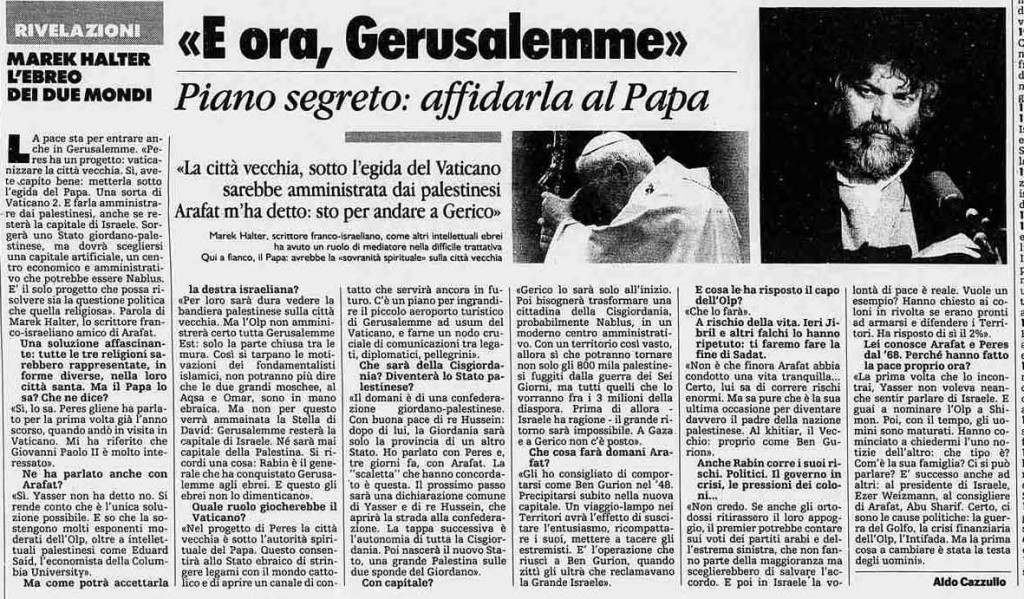 The headline reads “‘Now Jerusalem’ Secret Plan: to entrust it to the Pope”; the text below and to left of John Paul II’s photo reads, “The old town, under the auspices of the Vatican would be administered by the Palestinians Arafat told me: ‘I’m going to Jericho.’” The small print below that reads, “Mark Halter, French Israeli writer who, like other Jewish intellectuals played a mediating role in the difficult question, said here, the Pope would have the ‘spiritual sovereignty’ of the old town.” (translation Putnam)
The headline reads “‘Now Jerusalem’ Secret Plan: to entrust it to the Pope”; the text below and to left of John Paul II’s photo reads, “The old town, under the auspices of the Vatican would be administered by the Palestinians Arafat told me: ‘I’m going to Jericho.’” The small print below that reads, “Mark Halter, French Israeli writer who, like other Jewish intellectuals played a mediating role in the difficult question, said here, the Pope would have the ‘spiritual sovereignty’ of the old town.” (translation Putnam)
It seems that the timing of the Vatican’s long overdue recognition of the state of Israel was motivated more by ambition than repentance. The major players on the Israeli side are the current President Shimon Peres (the Israeli representative at Oslo) and his aid, left-wing politician Yossi Beilin, a former Knesset member, Deputy Foreign Affairs Minister, and Justice Minister. The secret deal was allegedly meant to sweeten the pot as a clandestine portion of the Oslo Accords. According to another Israeli journalist, Joel Bainerman, New World Order think-tank, the Council on Foreign Relations was behind the deal all along and was encouraging a turnover of Jerusalem to the Vatican:
The plan was originally discussed in November 1992 (the same time the first meetings in London took place to discuss an agreement between Israel and the PLO which was probably arranged by Council on Foreign Relations executive, Edgar Bronfman) when then Foreign Minister Shimon Peres met with Vatican officials in Rome. Under the plan, Jerusalem will stay the capital of Israel but the Old City will be administered by the Vatican. Arafat agreed not to oppose the plan. The plan also calls for Jerusalem to become the second Vatican of the world with all three major religions represented but under the authority of the Vatican. [iii] (emphasis added)
It seems the plan is underway. On February 4, 2012, an op-ed piece ran on the Israeli news site Ynet News titled, “Don’t Bow to the Vatican.” The editorial by Italian journalist Giulio Meotti opposes the Vatican’s designs on Jerusalem, and speaks in the past tense referencing the sovereignty over the Cenacle (which houses the Hall of the Last Supper and King David’s tomb):
Don’t Bow to the Vatican
Israel reached an historical agreement with the Vatican to give up some sort of sovereignty over the “Hall of the Last Supper” on Mount Zion in Jerusalem. The Vatican will now have a foothold at the site: Israel agreed to give the Vatican first priority in leasing opportunities and access to it. [iv]
It appears that Rome’s Jerusalem ambitions are being implemented just in time for the arrival of Petrus Romanus.

Next week we will begin to examine how this potentially fits into biblical prophecy.
[i] As cited by Joel Bainerman, “The Vatican Agenda: How Does the Vatican View the Legitimacy of Israel’s Claims to Jerusalem?” last accessed February 13, 2012, http://www.joelbainerman.com/pages/vatican.html.
[ii] Barry Chamish, Save Israel (Israel: Modlin House, 2001), 117.
[iii] Joel Bainerman, “Secrets of Oslo,” last accessed January 10, 2012, http://www.joelbainerman.com/articles/chronology.asp.
[iv] Giulio Meotti, “Don’t bow to the Vatican Op-ed: State of Israel Should Not be Giving Up its Sovereignty Over Holy Sites in Jerusalem,” February 4, 2012, http://www.ynetnews.com/articles/0,7340,L-4185027,00.html.
